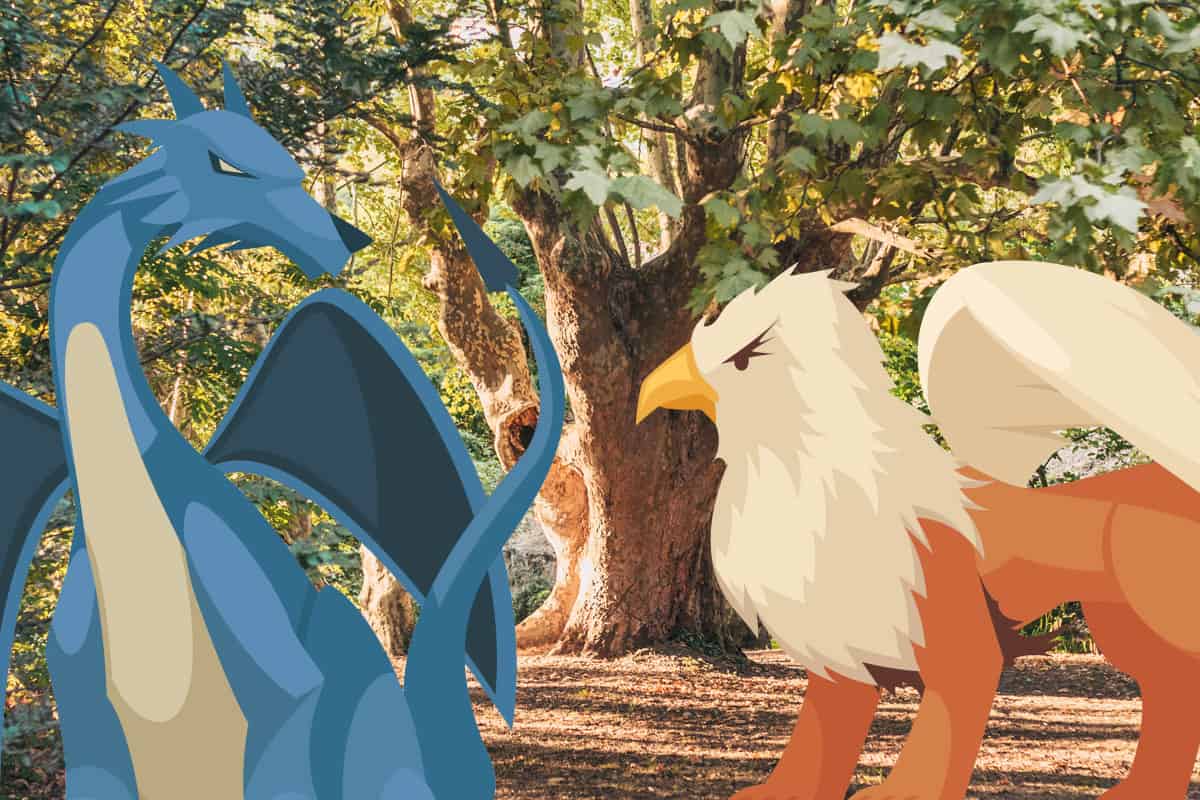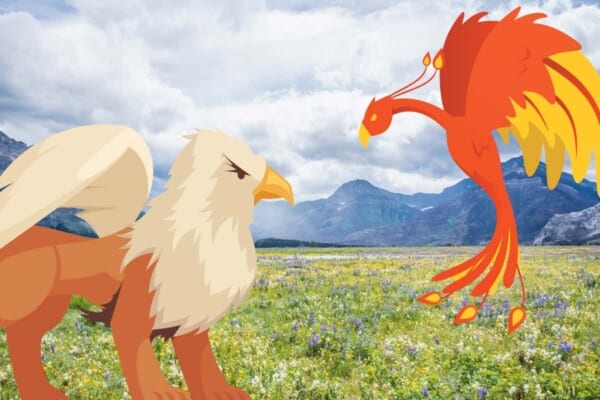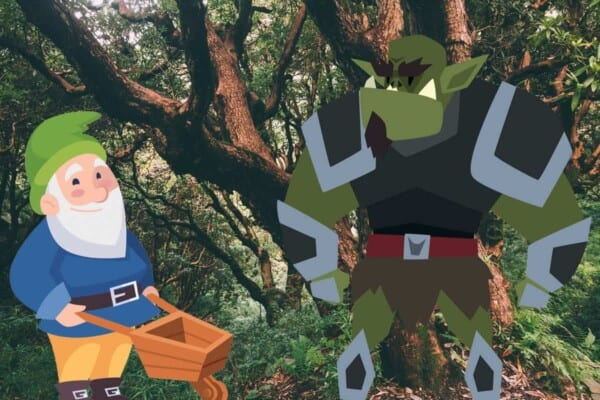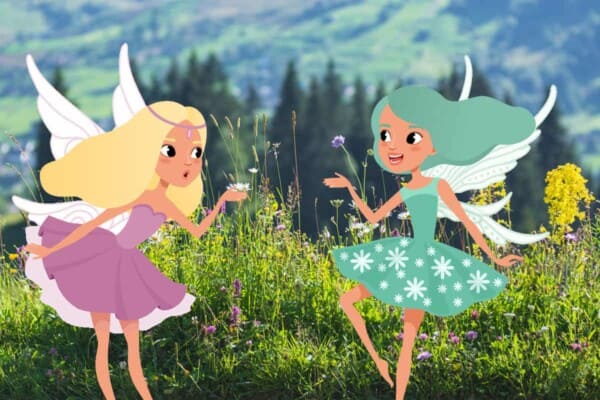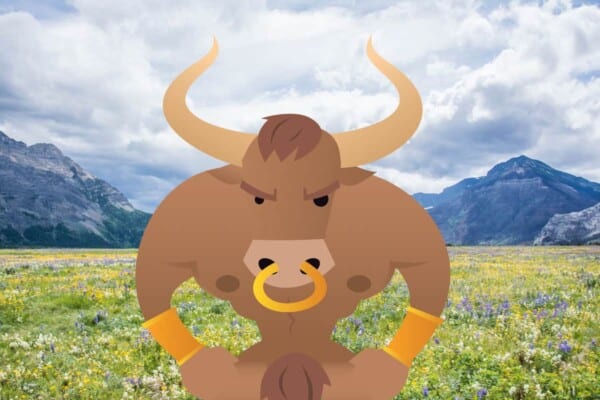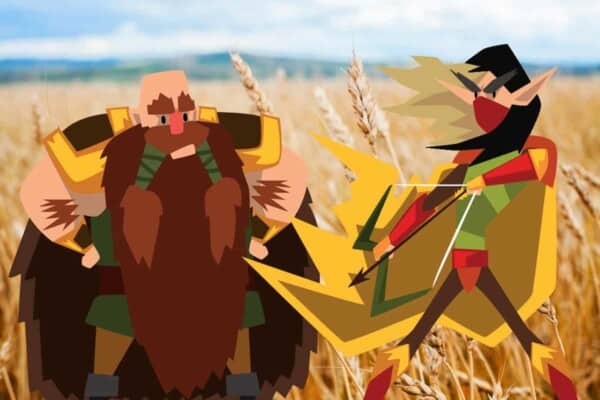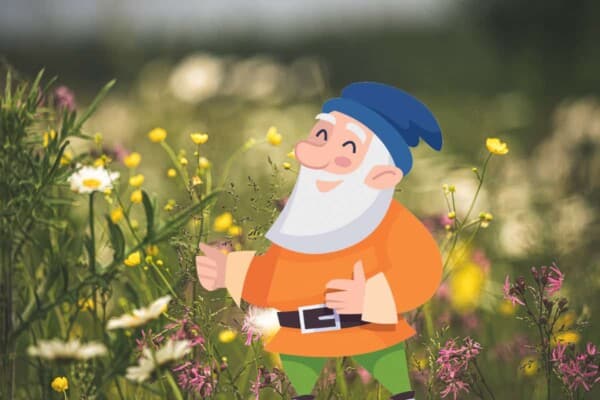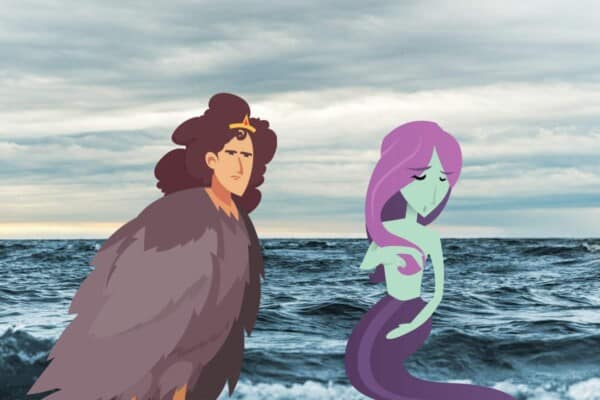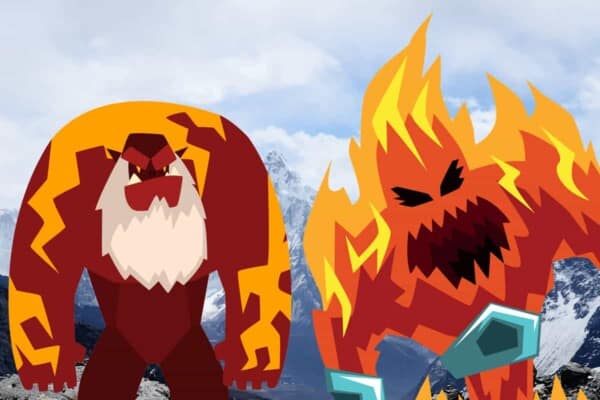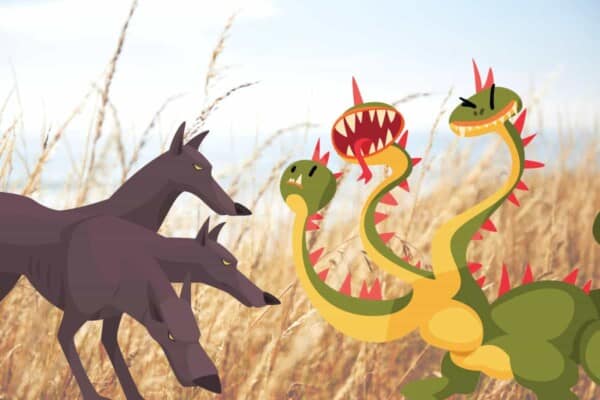In the world of mythical creatures, the dragon and the griffin are some of the most popular fantastical beasts – but many of their similarities stop there. Dragons are commonly known to dominate the sky with their fire and fierceness, while griffins represent a magical cross between two of the most noble and great predators in the animal kingdom.
A griffin is a hybrid of a lion and an eagle, typically depicted as having the body and tail of a lion but the head and wings of an eagle. Sometimes, they also have talons like an eagle on their front two limbs. Griffins represent a fusion of both the king of beasts, the lion, and the king of the skies, the eagle.
Dragons are gigantic, serpent-like creatures. In European and Western mythology, they are most often depicted as fire-breathing, winged beasts with dangerous barbed tails, and razor-sharp talons. The cultural portrayal of dragons differs sharply between this tale, rooted in Greek and Mesopotamian mythology, and the Chinese dragon of Eastern Asia, who is regarded as wise, lucky, and spiritual.
Meanwhile griffins enjoy a more romanticized reputation as loyal, courageous, and protective – even at one time being adopted as a symbol of the Christian church! They are regarded as trusted protectors of great treasures and benevolent creatures.
So who would win in a battle between dragon and griffin? While we can never know, some of their other key differences may help you decide…

What is the Difference Between a Griffin and a Dragon, Really?
— Origin in Lore
Griffin-like creatures began appearing in art and myths as early as 3,000 BC within Ancient Iranian, Egyptian, Persian, and Greek cultures. By the Middle Ages, its appearance had been fairly standardized to feature a lion’s body and tail with an eagle’s head and wings.
Tracing the origins of dragons in lore is not quite as simple. While the word is rooted in Ancient Greek, dragons appear in mythology dating back to Ancient China as early as 4,500 BC. There come to be two distinct characterizations of dragons, the malevolent European dragon and the benevolent Chinese dragon. Scholars suggest that the discovery of dinosaur bones influenced the development of dragon lore.
— Physical Description
Griffins are four-legged hybrids with the body and tail of a lion and the head and wings of an eagle. Often, the front limbs also have the talons of an eagle, while the hind legs remain that of a lion. In a few ancient depictions, griffins are wingless.The ears of a griffin are a distinctive feature as they are longer and look more like a lion’s than an eagle’s. If only looking at a griffin’s upper half, its ears could distinguish the legendary beast.
The physical description of dragons varies considerably more. Generally, dragons are reptilian, serpent-like, and scaled in appearance. In Western and European lore, dragons have four legs, massive wings, and the ability to breathe fire. Their eyes are typically larger and reptilian in nature. Dragons of the sea are also found in Norse mythology, lacking wings but equally fearsome. Dragons are almost always depicted with talons.
Dragons are typically much larger than griffins, though some early European references to dragons refer to dragons as the same size as horses or large dogs. Whereas dragons are covered in scales, griffins are covered in both fur and feathers.
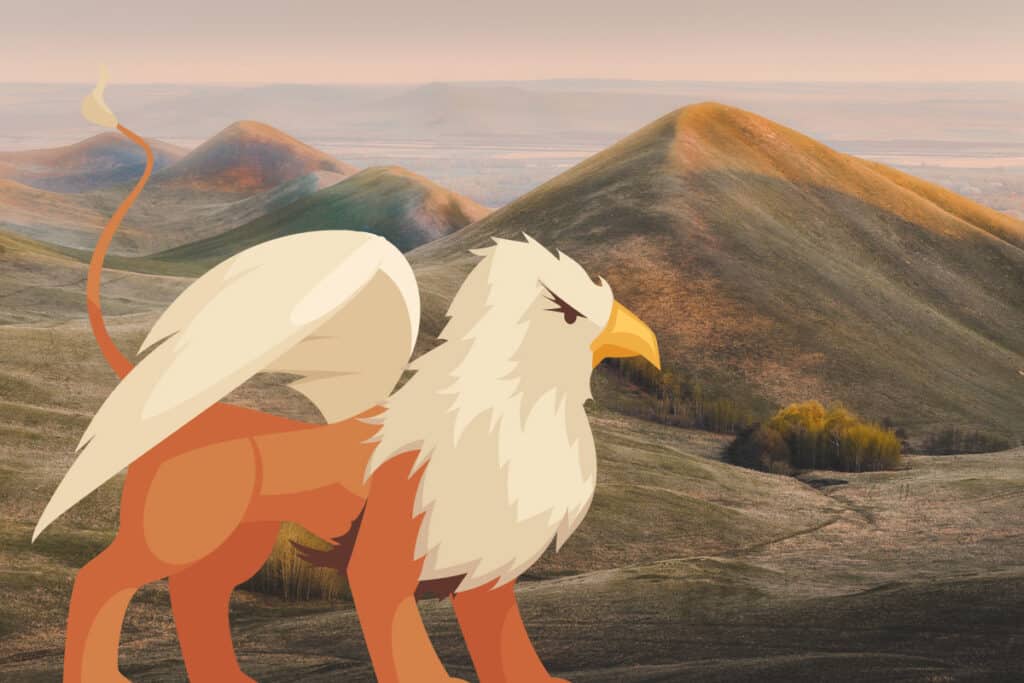
— Powers
Dragons are commonly associated with the ability to breathe fire. Dragons’ blood was famed for supernatural properties including healing and youth. Dragons are also said to live very long lives. Dragons of Eastern lore could fly as well, even without wings, and possessed the ability to shape shift.
Both creatures can fly, but griffins are also attributed the eyesight of an eagle. Some said a griffin’s feather could restore eyesight to the blind.
— Temperament & Reputation
Griffins are regarded as courageous, wise, and loyal. While there are references to both dragons and griffins guarding gold and treasure, griffins came to be hailed as trusted – and fierce – guardians of important treasures. In medieval European legends, griffins also mated for life and would not seek out new mates. The Christian Church adopted the griffin as a symbol against remarriage and of divinity, earning the creature a more favorable benevolent reputation
In European and Western myths, dragons are often portrayed as dangerous, evil, and villainous. They are often pitted against man, with subduing or slaying a dragon representing the completion of a major challenge or quest by a “hero.” Dragons also are noted to guard caves of treasure, though often their motive is based more nefarious (ie. greed, theft). However, it should be noted that several Eastern cultures instead characterized dragons as spiritual and wise.
— Pop Culture
Symbolizing courage and trust, griffins make for popular mascots and additions to crests and logos. The automobile company Saab’s logo features a griffin, as does the flag of Crimea, Ukraine. Perhaps the most famous “griffin” is in the pages of J.K. Rowling’s Harry Potter and the Prisoner of Azkaban – a hippogriff, the offspring of a griffin and a horse.
However, dragons are arguably the most widely-recognized mythical creature in popular culture. Acclaimed literature, television, and film pieces feature dragons at the center, from Beowoful to The Hobbit, Harry Potter to A Song of Ice and Fire. The popular Dungeons and Dragons video game recorded record-breaking sales and numbers of players in 2020.

